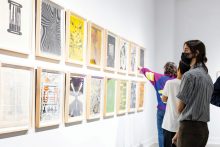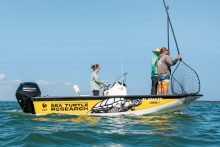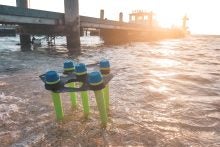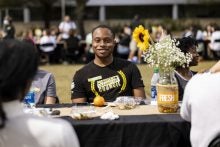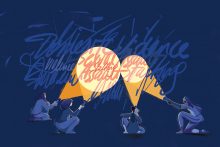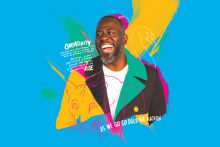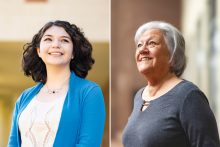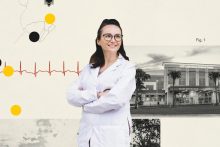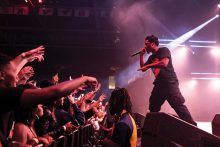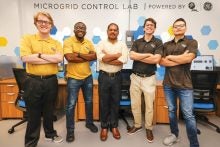
There was no gold watch, no tribute or toast, and there were definitely no balloons, yet it was a retirement worth cheering for. In February, the crew of the UCF Marine Turtle Research Group (MTRG) said goodbye to its longest-serving team member — a 46-year-old boat — and hello to a brand-new, custom-built vessel perfectly suited for their research needs.
Since the late 1970s, the MTRG team has studied the biology, ecology, diet, health, genetics and movements of sea turtles across all life stages — from eggs to adults. Some of this work occurs on the Indian River Lagoon, where the researchers set and monitor a long net to capture and assess juvenile sea turtles found foraging there. Of the three boats used by the crew to do their work, one was from the original fleet and had become reliably unreliable.
“I always joke that our bimonthly ‘team-building exercise’ is fixing something on the boats,” says Associate Professor Kate Mansfield, director of MTRG. “It’s really exciting that we can upgrade and have a boat that was manufactured in this century.”
Thanks to a generous donation from the Folke H. Peterson Foundation that was matched by the National Save the Sea Turtle Foundation and Boston Whaler, the group was able to secure the new boat.
The Boat
MTRG’s new boat is a Boston Whaler 170 Guardian, a 17-foot custom build that has none of the bells and whistles of a typical fishing boat, and that’s on purpose. No coolers. No fishing rod holders. Nothing that would snag the heavy and aptly named tangle net, which measures nearly 1,500 feet in length — more than a quarter of a mile. The boat also boasts additional balancing features, which make the stripped-down vessel safer and more stable for the crew and the sea turtles, too.
The Research
Twice a month, the team of faculty and students launches a trio of boats into the Indian River Lagoon on Florida’s east coast. Two boats set the heavy, lengthy net in the lagoon while the third “work-up boat” anchors near the middle of the net. When movement from a bobbing buoy signals the presence of a sea turtle, the team swoops in and scoops it up, transfers it to the work-up boat to be measured, studied and tagged, then releases it back into the water.
The Turtles
Florida’s waters and beaches are home to five species of sea turtles. The majority studied by MTRG are green turtles and loggerheads, and the ones they net in the Indian River Lagoon are almost exclusively juvenile in age.
“[They’re] the size of a dinner plate, just add a head and flippers to it,” says Mansfield. Some turtles they encounter are comparable in size to a large computer screen or a car seat and can take up to four people to lift and transfer into the boat.
The Discoveries
In addition to surveying sea turtles in the Indian River Lagoon, the program studies nesting sites on Florida’s beaches and tracks turtle movements in the Gulf of Mexico and North Atlantic, South Atlantic and Indian oceans.
In recent years, Mansfield and her team published groundbreaking studies that are helping explain where young oceanic juvenile turtles go during their “lost years” — the time between when a hatchling leaves the nest and when it returns to the area as a larger coastal juvenile. MTRG’s tracking work showed that some loggerhead and green turtles hatching from Florida’s Atlantic coast instinctively travel to the Sargasso Sea, an area in the North Atlantic framed by four ocean currents, where Sargassum seaweed gathers in large patches and provides food and shelter for a turtle’s first years of life.
The Impact
“[The new boat] is an essential tool for undergraduate and graduate research,” says Mansfield. “And we’re grateful to have a safe, sturdy and balanced boat that can handle our team, our heavy net, and the sea turtles we catch and release.”
Any undergraduate student at UCF can apply to become a summer intern with MTRG. Together, the students and researchers are continuing a legacy of work that has long-term impact on helping sea turtles survive — and thrive.
Editor’s note: About a week after the MTRG retired their old net boat, . Ehrhart began his in-water turtle research career on the now retired boat, according to Mansfield. MTRG’s new boat is now named in honor of a joke Ehrhart would tell new lab members.
